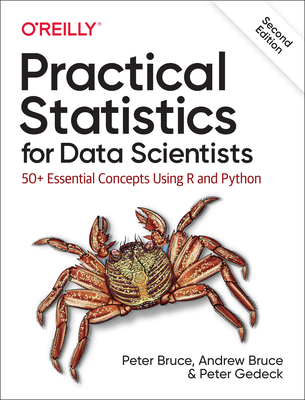Implementing SharePoint 2019 Service Applications Training in Sterling Heights
Enroll in or hire us to teach our Implementing SharePoint 2019 Service Applications class in Sterling Heights, Michigan by calling us @303.377.6176. Like all HSG
classes, Implementing SharePoint 2019 Service Applications may be offered either onsite or via instructor led virtual training. Consider looking at our public training schedule to see if it
is scheduled: Public Training Classes
Provided there are enough attendees, Implementing SharePoint 2019 Service Applications may be taught at one of our local training facilities.
|
We offer private customized training for groups of 3 or more attendees.
|
||
Course Description |
||
| In this course you will learn how to plan, configure, and manage service applications in SharePoint 2019, such as Managed Metadata, Business Connectivity Services, and enterprise search.
This course is designed for IT Professionals who deploy and manage the teamwork infrastructure in their organization.
Course Length: 2 Days
Course Tuition: $1290 (US) |
||
Prerequisites |
|
| The following are required: Experience with Windows PowerShell. Basic understanding of SQL Server management. Basic understanding of networking, including DNS. Working knowledge of windows server administration. Basic understanding of Active Directory and Azure AD. Basic understanding of mobile device management, and alternative operating systems (Android and macOS). | |
Course Outline |
|
Module 1: SharePoint Service Applications
This module is all about SharePoint service applications and workflow. It describes how to provision and manage a BCS service application and User Profile service application. Specifically, we discuss how to import and export BDC models as well as how to import user properties to SharePoint.
Lessons
SharePoint Service Applications and workflow
Plan and Configure Business Connectivity Services (BCS) and Secure Store
Plan and Configure User Profiles
After completing this module, students will be able to:
Explain the key components of a BDC model.
Describe the high-level architecture of BCS.
Provision a BDC Service Application instance.
Configure the Secure Store Service application.
Explain the purpose of the Secure Store Service.
Manage permissions for a BDC Service Application instance.
Describe how to configure user profile properties.
Describe how to manage audiences in SharePoint 2019.
Describe how to configure My Sites in SharePoint 2019.
Describe how to configure the User Profile Service Application.
Describe how to plan SharePoint Active Directory import and synchronization.
Module 2: Plan and configure Managed Metadata
This module is about the integral functionalities, such as the Managed Metadata Service, content types, and term sets, that allow you to create and disseminate an information architecture. It introduces the purpose of content types as well as the concepts behind the managed metadata service, including taxonomies, term sets, and enterprise keywords.
Lessons
Manage Content Types
Managed Metadata
Configure the Managed Metadata Service
After completing this module, students will be able to:
Explain the function and use of content types.
Describe the functions of the Managed Metadata Service.
Explain how to create and publish a content type across site collections.
Identify the capabilities of the managed metadata service.
Create and manage term groups, term sets, and terms
Configure term sets and terms for managed navigation.
Module 3: Plan and Configure Search
This module is about enterprose search service application. It provides details on planning and configuring content sources, crawl schedules, and crawl rules. It also discusses how to provision search management of a range of search components, such as Query Rules, Result Types and Display Templates.
Lessons
Plan enterprise search
Configure enterprise search
Manage enterprise search
After completing this module, students will be able to:
Describe the function of search components.
Explain how to plan and configure a search topology.
Describe how to plan and configure content sources.
Describe how to plan and configure crawl schedules.
Describe how to plan and configure crawl rules.
Describe how to manage the search schema.
Describe how to configure search center.
Explain the use and deployment of query rules.
Explain the use and deployment of result source.
Module 4: Course Conclusion
Lab : Configuring Enterprise Search
|
Course Directory [training on all levels]
Technical Training Courses
Software engineer/architect, System Admin ... Welcome!
- .NET Classes
- Agile/Scrum Classes
- AI Classes
- Ajax Classes
- Android and iPhone Programming Classes
- Azure Classes
- Blaze Advisor Classes
- C Programming Classes
- C# Programming Classes
- C++ Programming Classes
- Cisco Classes
- Cloud Classes
- CompTIA Classes
- Crystal Reports Classes
- Data Classes
- Design Patterns Classes
- DevOps Classes
- Foundations of Web Design & Web Authoring Classes
- Git, Jira, Wicket, Gradle, Tableau Classes
- IBM Classes
- Java Programming Classes
- JBoss Administration Classes
- JUnit, TDD, CPTC, Web Penetration Classes
- Linux Unix Classes
- Machine Learning Classes
- Microsoft Classes
- Microsoft Development Classes
- Microsoft SQL Server Classes
- Microsoft Team Foundation Server Classes
- Microsoft Windows Server Classes
- Oracle, MySQL, Cassandra, Hadoop Database Classes
- Perl Programming Classes
- Python Programming Classes
- Ruby Programming Classes
- SAS Classes
- Security Classes
- SharePoint Classes
- SOA Classes
- Tcl, Awk, Bash, Shell Classes
- UML Classes
- VMWare Classes
- Web Development Classes
- Web Services Classes
- Weblogic Administration Classes
- XML Classes
Business Training Courses
Project Managers, Business Analysts, Paralegals ... Welcome!
Upcoming Classes
Gain insight and ideas from students with different perspectives and experiences.






